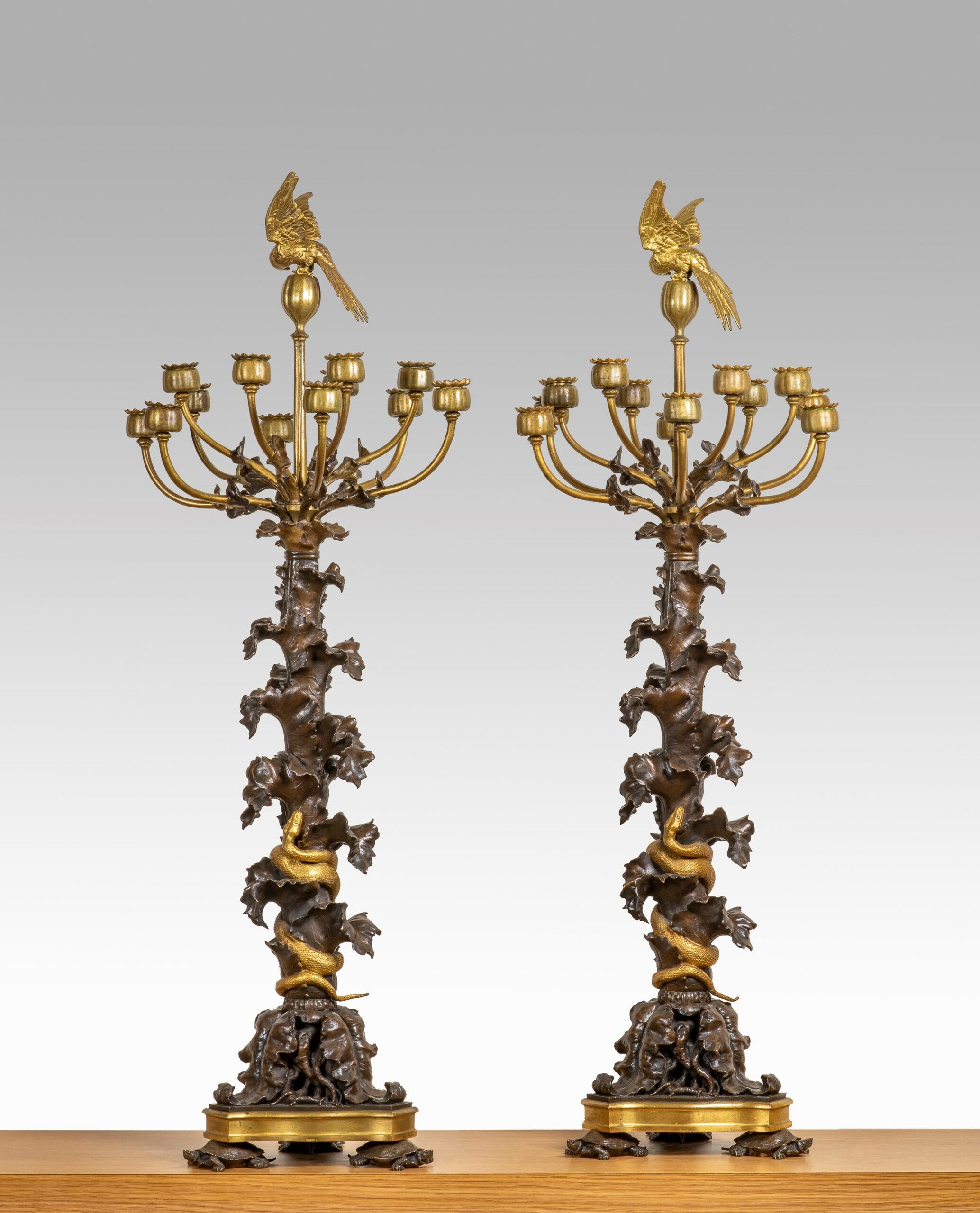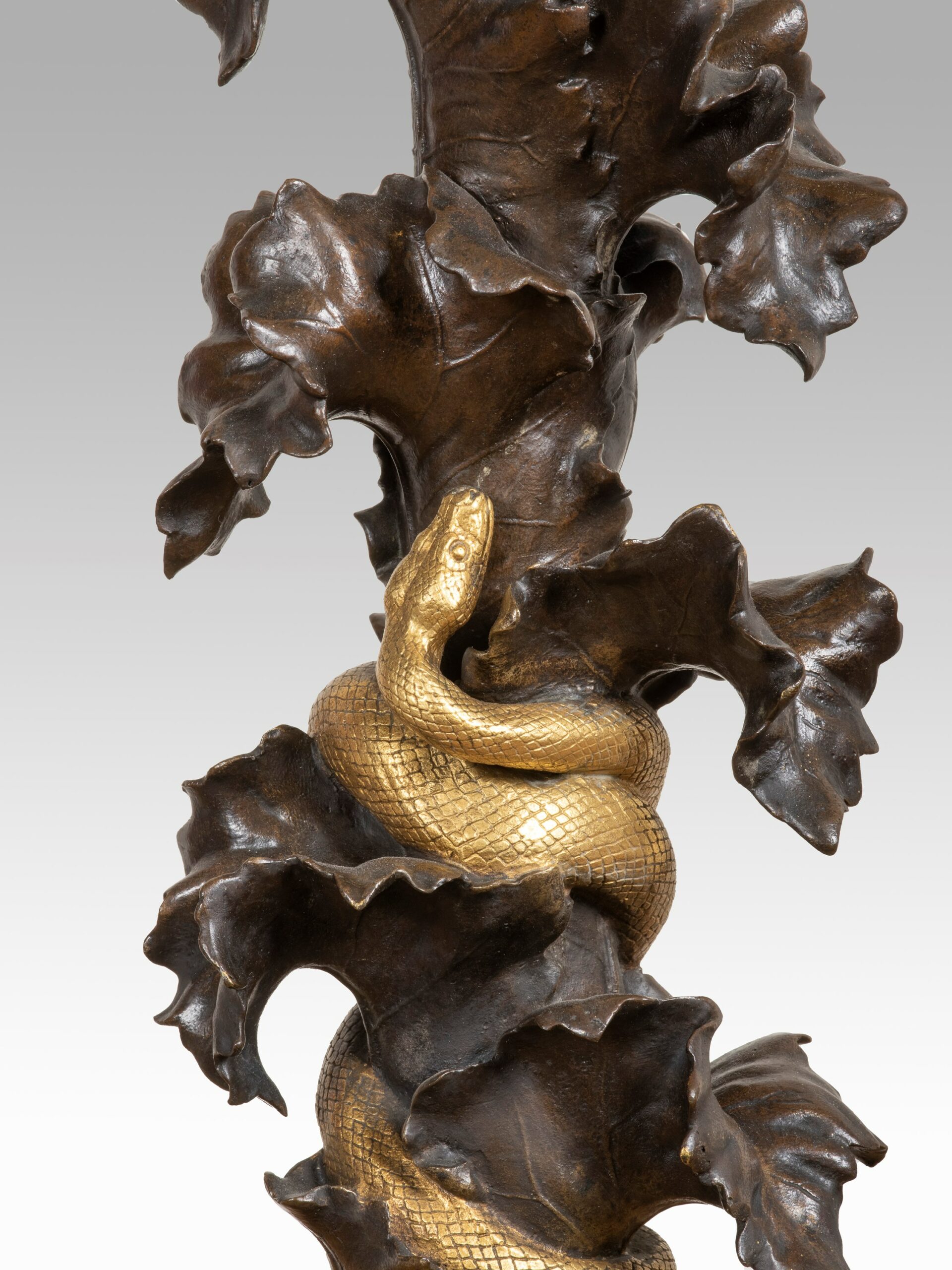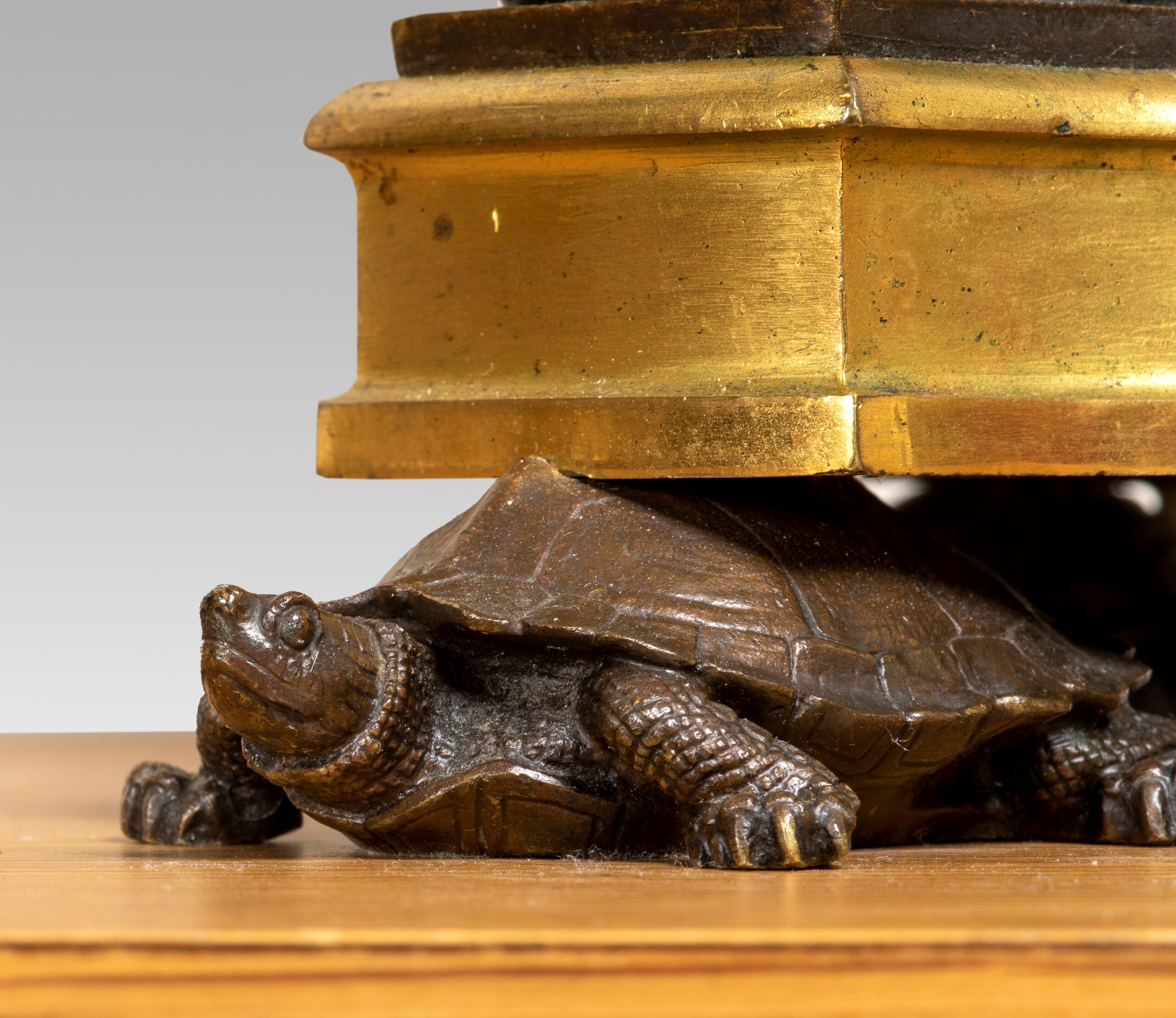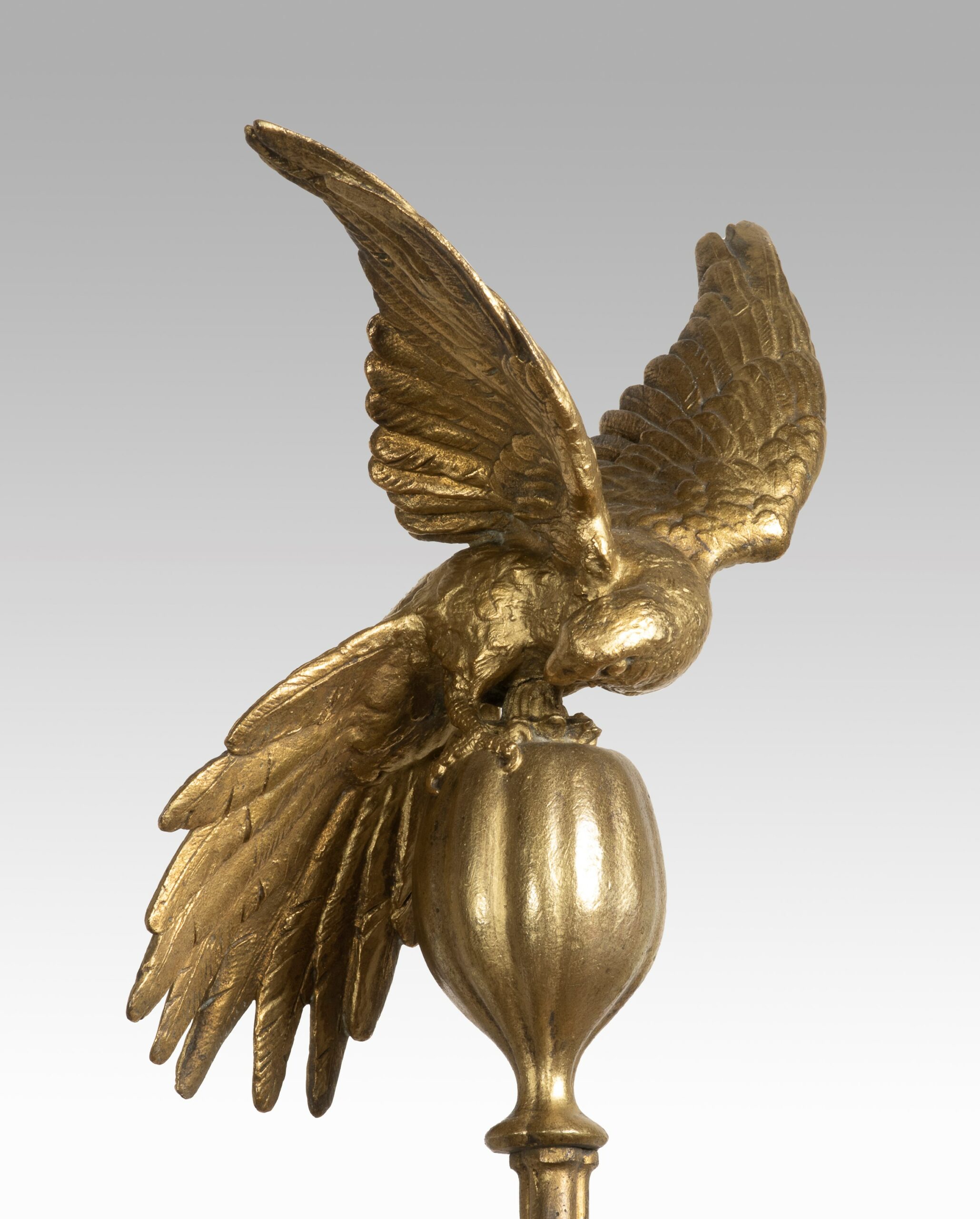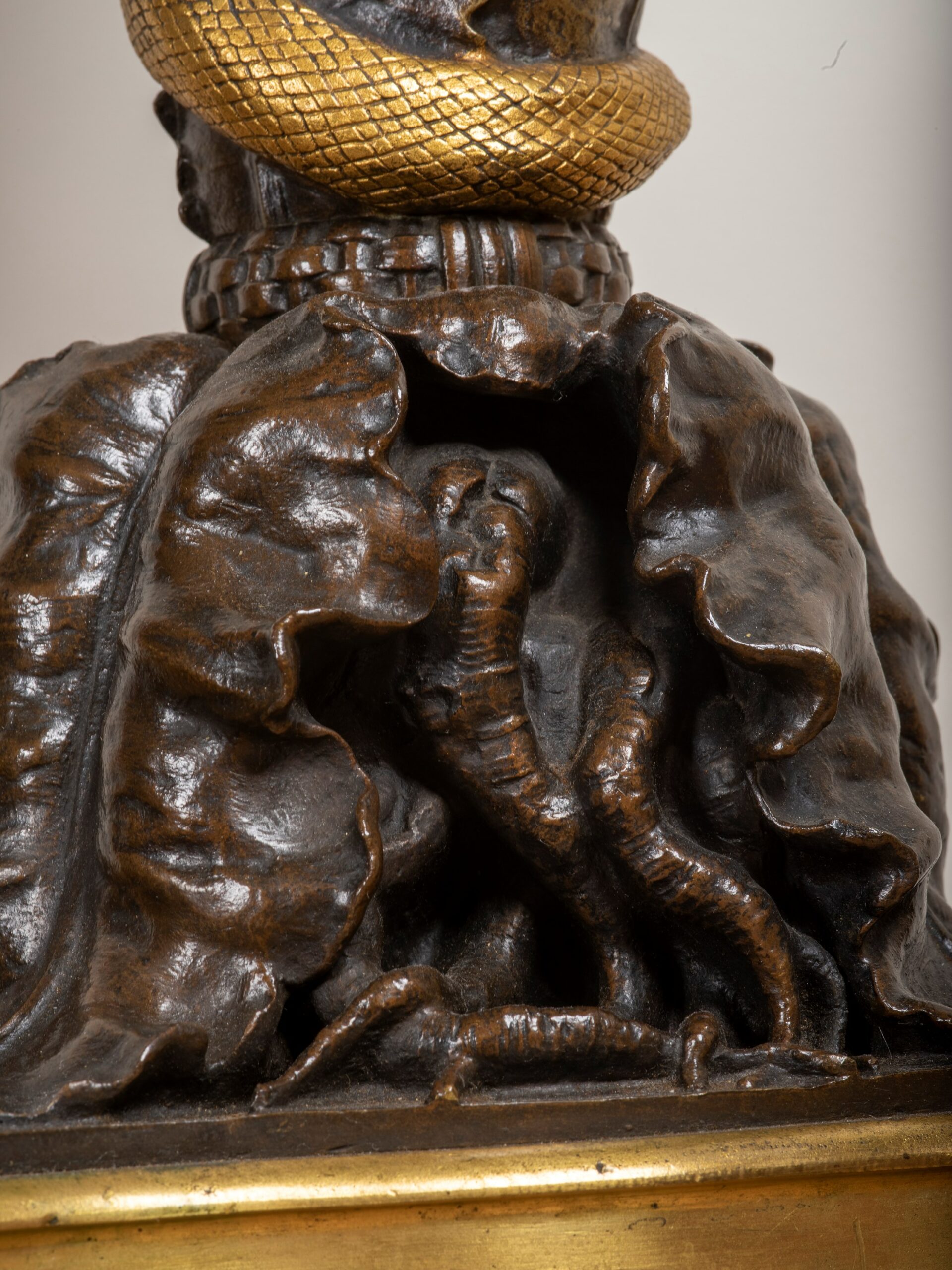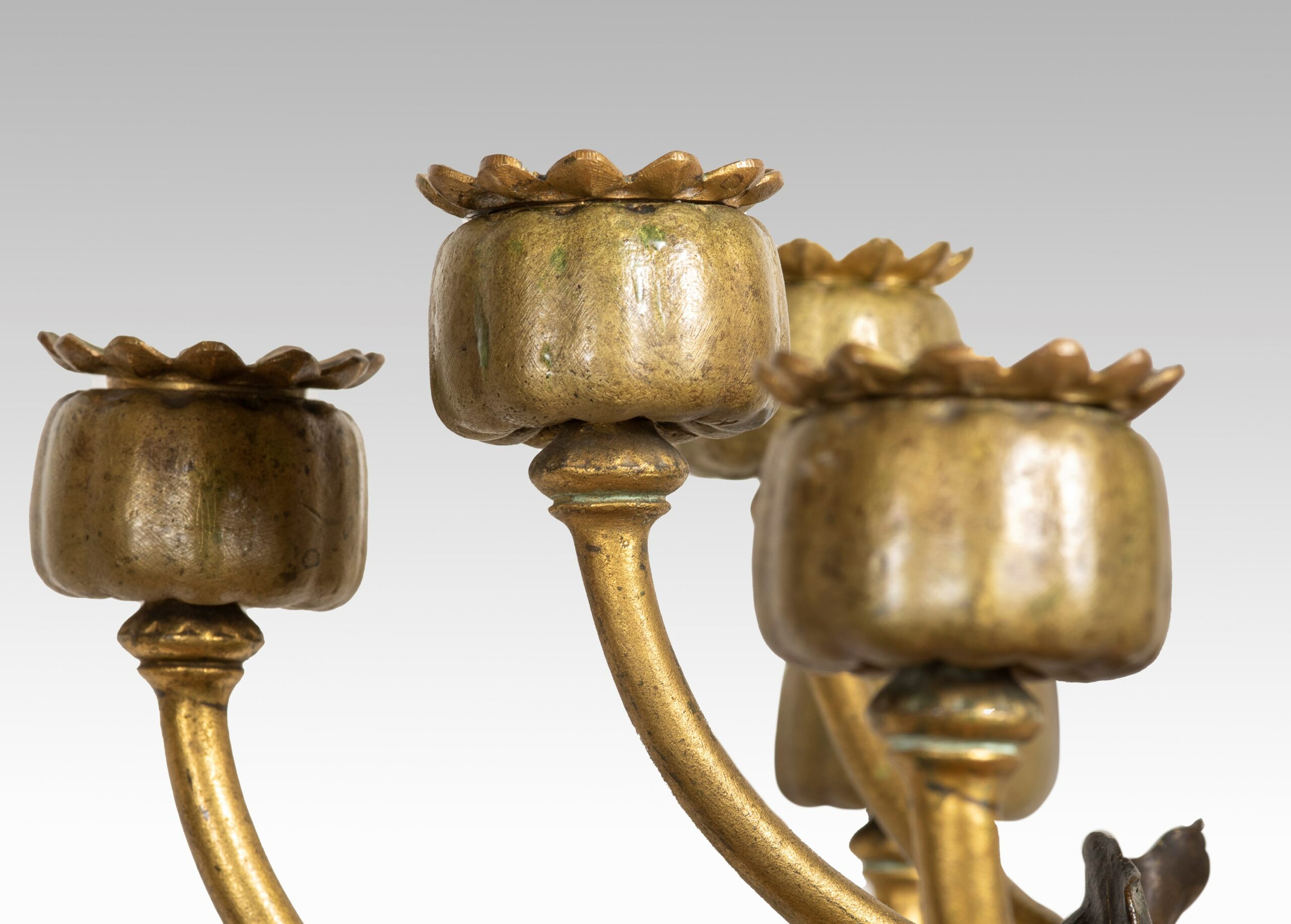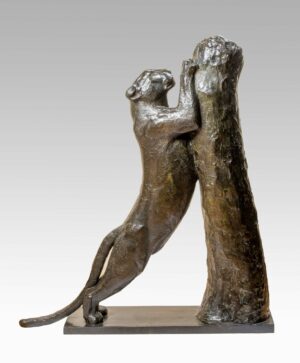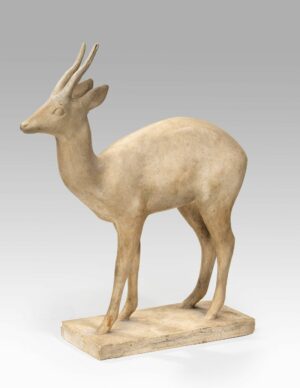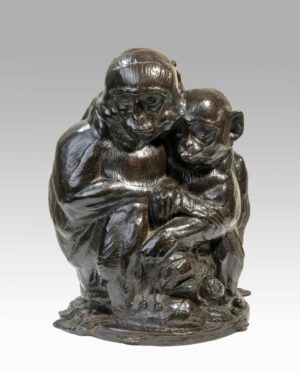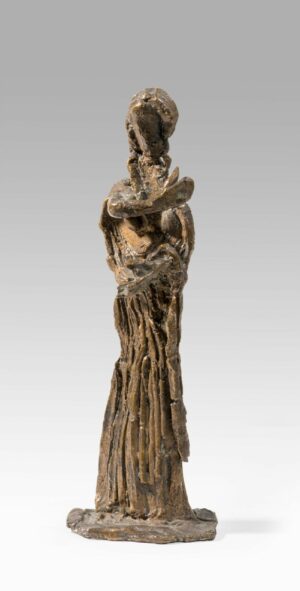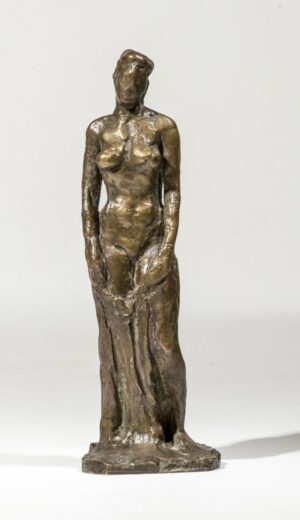Description
Owing to a particularly long career, Antoine-Louis Barye (1795-1875) left an indelible imprint on the history of the 19th Century French sculpture. Son of a goldsmith, he was trained so as to succeed his father. He then chose two masters, Bosio for modelling and Gros for drawing. After a seven-year apprenticeship at the Ecole des Beaux-Arts, he entered the workshop of the goldsmith Jacques-Henri Fauconnier (1779-1839) alongside whom he perfected his art. Very early on he spent quite a lot of time at the Jardin des Plantes, together with his friend Eugène Delacroix, where he learned to master morphology and animal anatomy. Barye emerged as a sculptor when his ‘Tiger devouring a garial’ was exhibited at the 1831 Salon and met with instant success. The 1833 Salon marked his consecration with the famous ‘Lion and Serpent’. From there on he benefited from the protection of the royal family, as shown by the commission of an imposing table centre-piece from Philippe d’Orléans (1834-1839). Around 1838, Barye set up his first foundry, dealing with both the carving and the commercialization of his artworks. Then, and for thirteen years on, he lost the control of the carving of his bronzes, when he associated with the manufacturer Emile Martin. In 1854, he was appointed professor of zoological drawing at the Museum National d’Histoire Naturelle. Three years later, he once again took control of his production with the Barye workshop, which brought together sculptors, chiselers and patina artists, and this until his death in 1875. Throughout that period, orders were pouring in from prestigious art collectors and American art dealers who started to acquire his works. At the 1855 Exposition Universelle, Barye received the Grande Médaille d’honneur, and in that of 1867, the Grande Médaille d’Or. He was elected at the Académie des Beaux-Arts in 1868 by unanimity of the votes cast. In 1874, the last catalogue of his bronzes was published at 4 quai des Célestins, Paris.
From among the 19th century French sculptors, Antoine Louis Barye is certainly one of those who created the most beautiful ornamental bronzes. His collection mainly consists of candelabra, bowls, candlesticks and inkwells. Some models were designed to be a matching pair.
These candelabra, the most richly ornamented in the collection, are décorated from their base with a lush vegetation bursting with roots and poppy leaves. A serpent in gilded bronze coils around the candelabra, a third of its way up, bringing it an additional relief. The candle-ring which complete its branches, also in gilt bronze, are adorned with opium flowers. The stem is topped with a parakeet which was to be designed to match another candelabra in a later version. The moulded base, underlined with gilded bronze, is ornated with three tortoises, at each corner of the triangle.
There are probably less than fifteen copies of this exceptional artwork, ours being numbered 4. The polychrome models are rather rare. Three of them are known to be currently held by the Musée Bonnat, Bayonne, the Musée des Arts décoratifs, Paris and the Musée du Louvre, Paris. Ours is quite similar to that of the musée des Arts Décoratifs by its sense of detail and gilded bronze.

